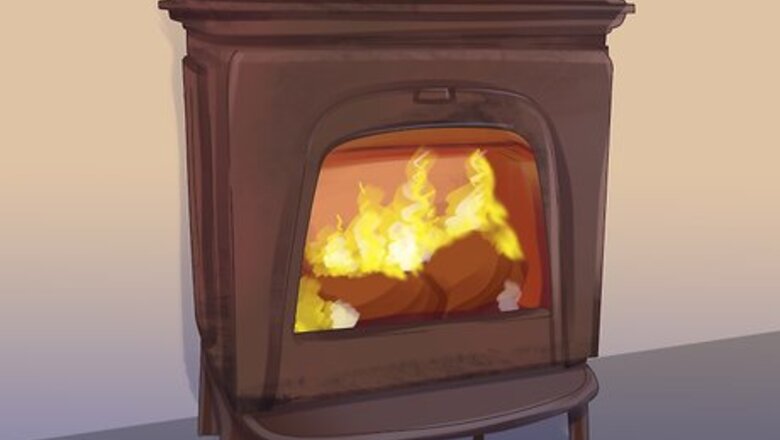
views
Cleaning Soot and Stains from the Glass
Clean the glass once a week during consistent use. If you are using your fireplace or woodstove most days, then you should clean the glass once a week to maintain it. Using poor, unseasoned, damp, or soft wood could require an extra cleaning, however, because they cause soot to build up faster. If you are not using your fireplace or woodstove often, then you may be able to go longer between cleanings.
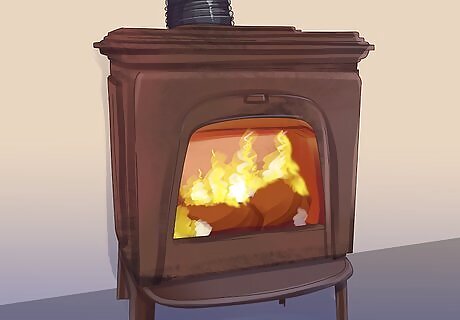
Burn hot fires to remove black stains. Stubborn black soot stains that bake onto fireplace or woodstove glass can be very difficult to remove. But hot fires will help loosen the stains from the glass and make them easier to remove with cleaning Before cleaning your glass, burn one or two hot fires in your fireplace or woodstove to loosen up the soot and dirt that’s built up on the glass. Alternatively, you could burn a creosote removal product or add a few big spoonfuls of 'Red Devil Lye' to the fire box to help soften and reduce the buildup.
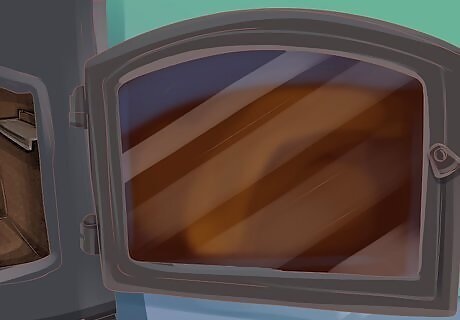
Let the glass cool. You should never try to clean a fireplace or woodstove when it’s hot, and this applies to the glass as well. You could burn yourself or crack the glass if you're not careful. To be safe, let the stove or fireplace cool for at least 6 to 8 hours before trying to clean it. If you can, wait a couple of days. You should check the temperature before trying to touch it.
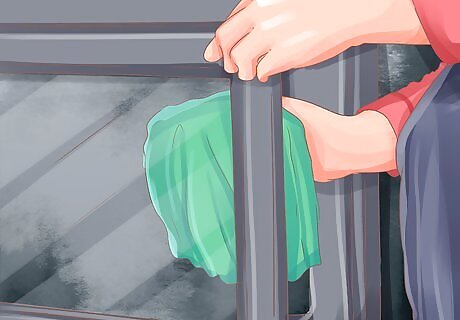
Wipe away haze buildup. For fireplace and woodstove glass that’s relatively clean and well-maintained, you may just have to wipe away a thin layer of haze from the glass. Soak a microfiber cloth or paper towel with water. Wring out the excess, and wipe the inside of the glass with the damp cloth. You could also use old newspaper for the first wipe down to clear away some of the haze. Make sure to wear gloves while you clean the stove, whether they are reusable or disposable. This will be sufficient to remove the white or grayish haze that can build up on glass from the heat, smoke, and ash. If your glass is still dirty after a quick wipe, continue with the cleaning process.
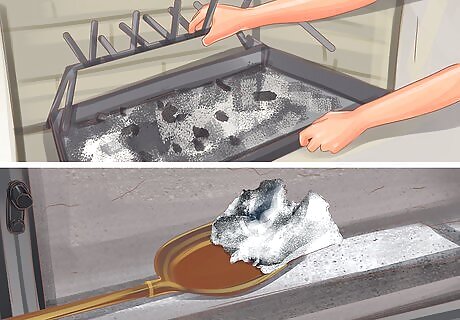
Remove dirt and soot buildup with ashes. Take some fine white ashes from the fireplace or woodstove. Place the ashes into a bowl and add a few drops of water. Stir the ash and water mixture into a paste, adding more water if necessary. Dip a microfiber cloth into the ash paste and scrub the glass in a circular motion. Add more ash paste to the cloth as necessary, and keep rubbing until you’ve removed the soot. Rinse the cloth with water, wring it out, and wipe the glass with the clean cloth. You can also use newspaper or paper towel to clean the glass instead of a cloth. Wood ashes have a high pH and contain calcium carbonate, which is why they're so great for cleaning soot from glass. The ashes also help loosen the soot so it can be more easily wiped away.
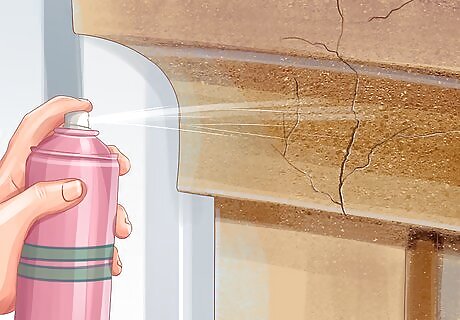
Remove brown stains with cleaner. Brown stains sometimes build up on the glass because of the carbon in the fire. To remove stubborn brown stains, spray woodstove glass cleaner on the window and let it sit for 30 minutes. After soaking, wipe the glass with a damp microfiber cloth to remove stains and excess cleaner. You can also use this cleaner and the same method to clean the outside of the glass if it’s dirty. Avoid ammonia-based cleaners on woodstove and fireplace glass. These can leave rainbow streaks on the glass, and many glass manufacturers don’t recommend using them.
Keeping the Glass Clear
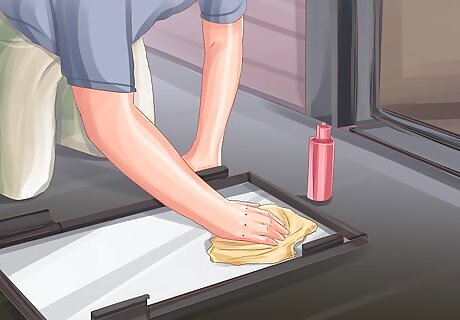
Clean the glass regularly. The easiest way to maintain the glass in your fireplace or woodstove is to clean it regularly so that deep cleaning isn't necessary. When you're burning regular fires, clean the glass each week with an ash paste: When the fireplace or woodstove has had a day or two to cool, gather some ashes. Mix the ashes with enough water to make a paste. Apply the paste to the glass with a microfiber cloth to remove soot and dirt. Wipe the glass clean with a damp microfiber cloth. Alternatively, you can buy a commercially-available paste cleaning product.
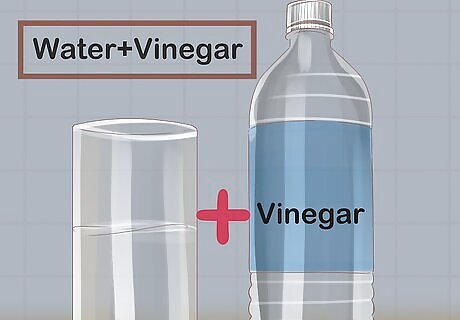
Remove streaks with water and vinegar. Sometimes cleaning agents and ash paste can leave streaks on your glass that make it difficult to see the fire. To remove this, mix one part vinegar with three parts water in a spray bottle. Spray the solution onto the glass and wipe the glass with a dry microfiber cloth until the glass is dry. Clean the inside and the outside of the glass in this way to remove streaks and make the glass clear and spotless.
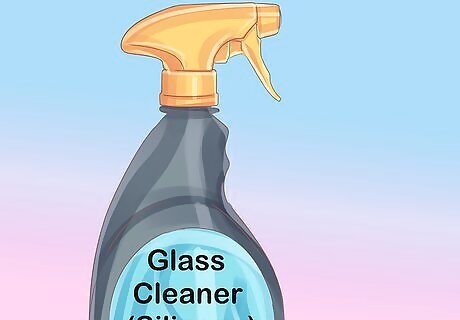
Apply glass cleaner with silicone. Glass cleaners that contain silicone will leave a layer on the glass. This layer will protect the glass from dirt and soot buildup, meaning you won’t have to clean the glass as often, and cleaning will be easier. Before applying any cleaner that isn't made specifically for wood stoves or fireplaces, read the instructions to make sure it’s heat- and fire-safe.
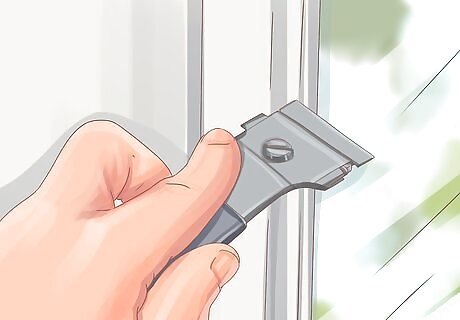
Don’t scrape the glass. Scraping the glass with a razor blade or other sharp implement may help to remove soot and buildup from fireplace and woodstove glass, but it’s more likely to scratch or gouge the glass. Modern fireplace and woodstove glass is actually a ceramic glass, and it’s much softer than regular glass. Scratches in the glass will make the fire harder to see, and will provide small crevasses for soot and dirt to hide.
Burning Clean Fires
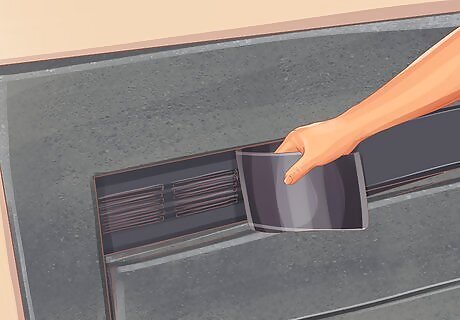
Keep air vents clear. Clean fires will produce less smoke and lead to less soot buildup, which is why clean fires are important for keeping the glass clean. Fire needs oxygen to burn, so you must make sure the air vents in your fireplace or woodstove are open and clear when you're burning fires. Don’t let fuel block the air intake vents. Clean the ashes out regularly to keep the intakes clear. Make sure the air intakes are all open when you start a fire, and keep them fully open until the fire is established. Check that the dampers and vents are working correctly. Make sure the flue, chimney, and/or stovepipe are clean and clear.
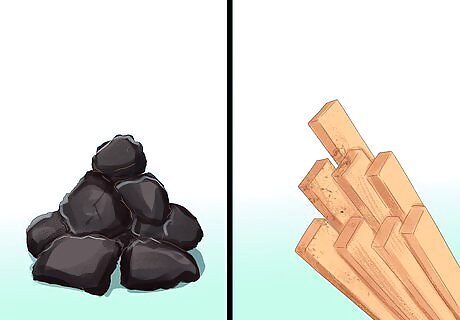
Burn seasoned hardwood only. When clean fires are your priority, dry hardwood is the only fuel you should burn in your woodstove or fireplace. This will produce the hottest fire, will ensure all the fuel burns, and will help prevent smoke or soot. To prevent smoke, soot, and creosote buildup, never burn: Wet or damp wood Coal Treated wood Garbage Large amounts of paper

Avoid burning certain softwoods. Softwoods tend to contain more resin than hardwoods, so they can lead to more smoke, soot, and creosote. Pine and birch especially contain a lot of resin that can leave soot on the glass, so you should never burn these in your fireplace or woodstove. Softwood is wood that comes from coniferous trees, and hardwood comes from deciduous trees.
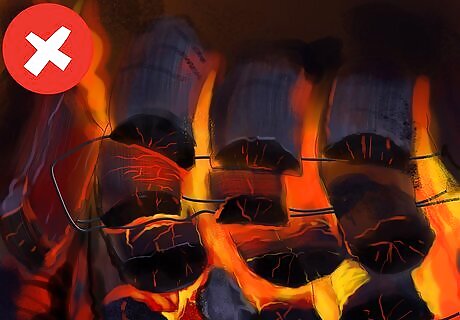
Don’t let fires smoulder. Smouldering will occur if the fire isn't getting enough air, if the fuel is wet, or if you put too much fuel on at once. Smouldering means the wood isn't burning properly, and this will create soot on the glass and creosote in the chimney. To avoid a smouldering fire: Make sure the fire gets enough air, and open the intakes more if necessary Don’t pack the fireplace or woodstove full of logs that can smother the flames Add four to five pieces of fuel at a time Never burn wet fuel

Don’t let fuel touch the glass. When fuel touches the glass, the flames will be right against the glass. This will create difficult-to-remove black stains. To avoid this, don’t overload the woodstove or fireplace, and build your fire so the fuel is a safe distance from the glass.


















Comments
0 comment